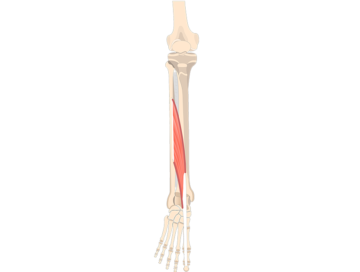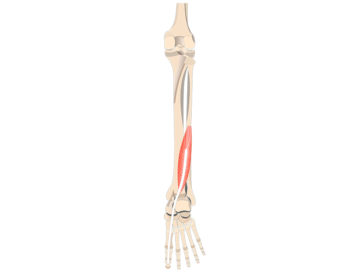Foot Muscles
The muscles responsible for moving the ankle are categorized as follows:
- The front muscles of the leg – mainly facilitating the action of pulling the foot up, as well as assisting in turning it inward or outward.
- The back muscles of the leg – primarily responsible for pushing the foot downward, as well as assisting in turning it inward.
- The side muscles of the leg – involved in turning the foot outward.
The foot muscles can be grouped based on either their positioning (horizontal classification) or their functions (vertical classification).
- First layer: Abductor hallucis, flexor digitorum brevis, abductor digiti minimi
- Second layer: Quadratus plantae, lumbricals
- Third layer: Flexor hallucis brevis, adductor hallucis, flexor digiti minimi brevis
- Fourth layer: Plantar and dorsal interossei
The dorsal foot muscles include the extensor digitorum brevis and extensor hallucis brevis muscles. Their primary function is to extend the toes.
Lateral foot muscles:
- Abductor digiti minimi
- flexor digiti minimi brevis
- opponens digiti minimi muscles
These muscles control the movement of the fifth toe.
Central plantar muscles:
- Flexor digitorum brevis
- quadratus plantae
- lumbricals
- plantar interossei
- dorsal interossei
They are responsible for moving the four lateral toes.
Medial plantar muscles:
- abductor hallucis
- adductor hallucis
- flexor hallucis brevis
These muscles control the movement of the big toe (hallux).
Tibialis Anterior Muscle

The tibialis anterior is a muscle located in the front of the lower leg. It is responsible for dorsiflexion of the ankle, which means it allows you to lift the front of your foot towards your shin.
Extensor Digitorum Longus

The extensor digitorum longus is a muscle located in the front of the lower leg. It extends along the length of the leg and is responsible for extending (straightening) the toes and lifting the foot at the ankle joint.
Fibularis / Peroneus Tertius

The fibularis tertius, also known as the peroneus tertius, is a muscle located in the front of the lower leg. It runs along the fibula bone and is responsible for dorsiflexion and eversion of the foot. Dorsiflexion involves lifting the foot towards the shin, while eversion is the outward movement of the foot.
Extensor Hallucis Longus

The extensor hallucis muscle is a muscle located in the front of the lower leg. It is responsible for extending (straightening) the big toe at the metatarsophalangeal joint, allowing you to lift the big toe off the ground. The extensor hallucis muscle plays a role in maintaining balance and stability during walking and other activities that involve pushing off the ground with the big toe.
The gastrocnemius is a large, powerful muscle located in the back of the lower leg. It forms the bulk of the calf and is responsible for plantar flexion of the foot, which means pointing the foot downward.
The plantaris is a small, slender muscle located in the back of the lower leg. It runs alongside the gastrocnemius muscle and is responsible for assisting in plantar flexion of the foot (pointing the foot downward).
The soleus is a muscle located in the back of the lower leg, beneath the gastrocnemius. It plays a key role in plantar flexion of the foot (pointing the foot downward). The soleus muscle is important for maintaining posture and providing support during activities like standing and walking.
Flexor Digitorum Longus

The flexor digitorum longus is a muscle located in the back of the lower leg. It runs along the tibia bone and is responsible for flexing (curling) the toes at the metatarsophalangeal and interphalangeal joints.
Tibialis Posterior Muscle

The tibialis posterior is a muscle located in the back of the lower leg. It runs along the tibia and fibula bones and is responsible for inversion of the foot, which means turning the foot inward.

The flexor hallucis muscle, also known as flexor hallucis longus, is a muscle located in the back of the lower leg. It runs along the tibia bone and is responsible for flexing (curling) the big toe at the metatarsophalangeal and interphalangeal joints.
Fibularis / Peroneus Brevis

The fibularis brevis, also known as peroneus brevis, is a muscle located in the lateral (outer) part of the lower leg. It runs along the fibula bone and is responsible for eversion of the foot, which means turning the foot outward.
Fibularis / Peroneus Longus

The fibularis longus, also known as peroneus longus, is a muscle located in the lateral (outer) part of the lower leg. It runs along the fibula bone and is responsible for eversion of the foot, which means turning the foot outward. The fibularis longus muscle also assists in plantar flexion, pointing the foot downward.




